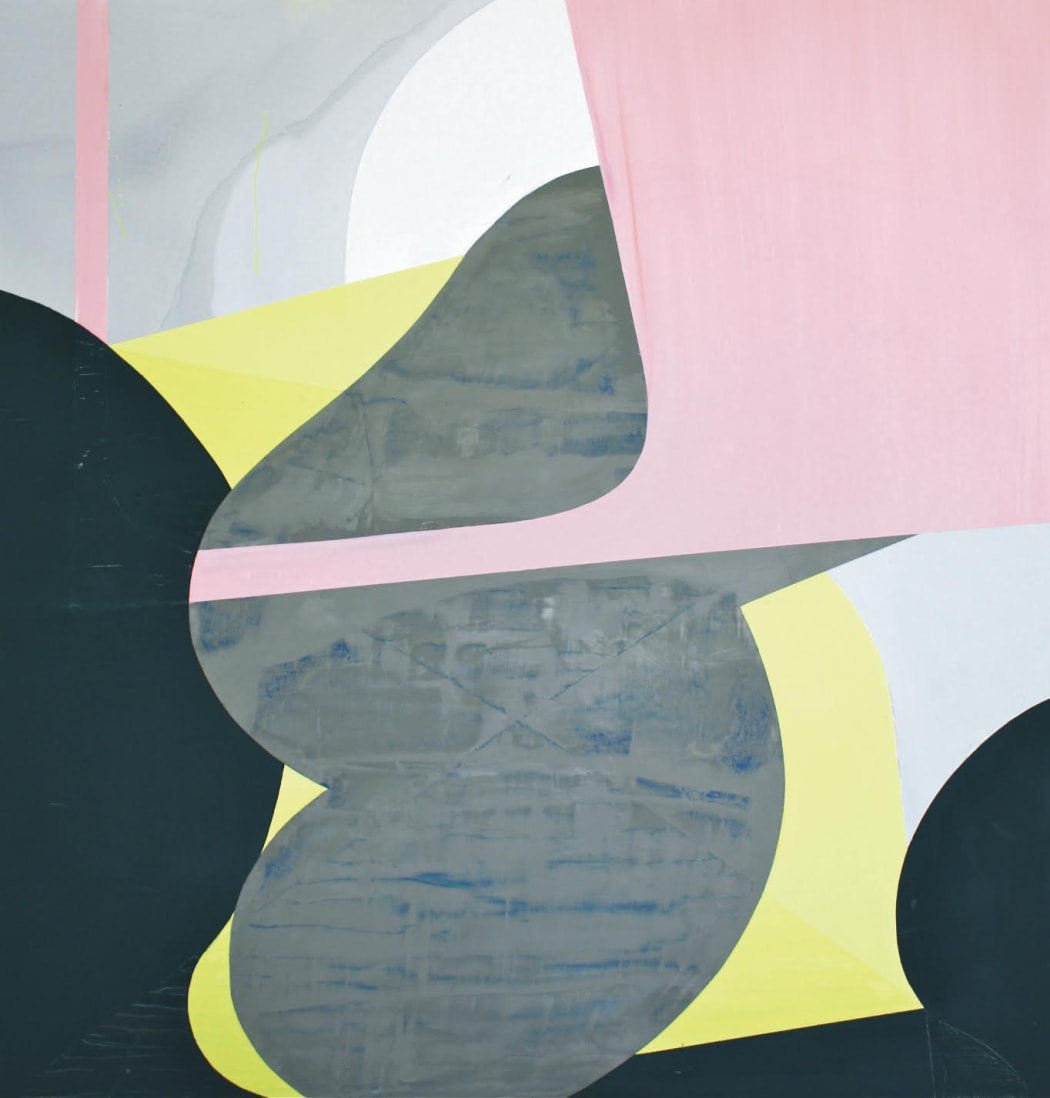
Every week, we'll be sitting down with one of our gallery artists to discuss their work, process, inspiration, and stories. This week we're speaking with Marcelyn McNeil.

"Cliff Hanger"
There is a tension in Marcelyn McNeil's oil paintings deriving from her prioritization of a sense of flatness while also considering her forms in a sculptural manner. McNeil's soft shapes engage with one another, forming dynamic relationships from how they occupy the space and the interplay of their colors. The composition appears both carefully considered and the result of free and playful exploration. Each piece is activated by an animated, almost peculiar, energy as the elements compete against one another across the plane. The added depth of McNeil's sculptural collages allows her to push these dynamics even further, creating an enticing complement to her paintings. McNeil spoke with us from her studio in Houston, Texas about the inherent conflicts of her work, establishing a process that honors both sculpture and painting, and finding clarity through color.
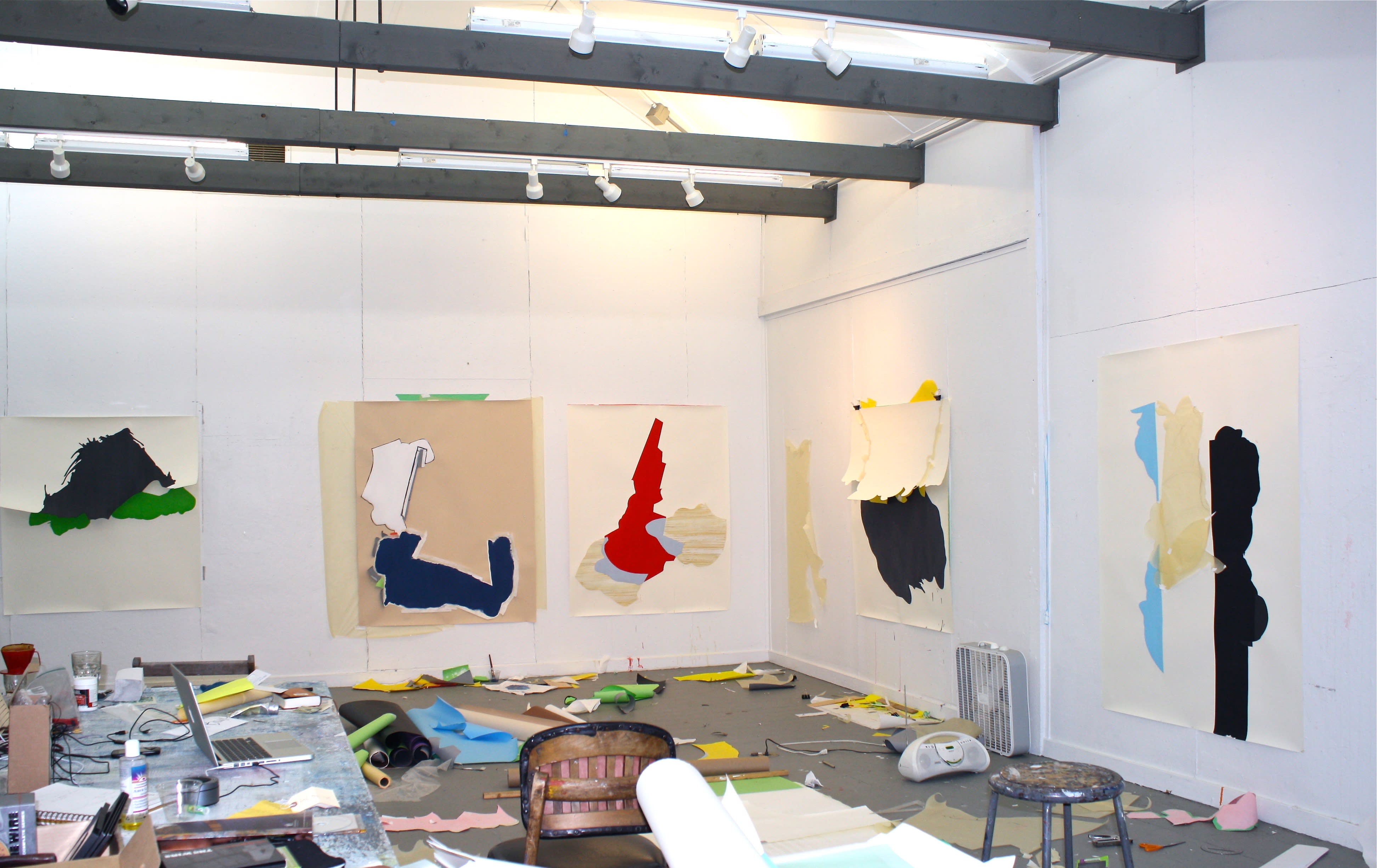
Studio view, photo courtesy of the artist
What are your earliest memories relating to art?
My earliest memories in art are musical. Our home was continuously filled with classical sound as my mother and both my siblings were accomplished classical pianists. It wasn't until college while studying architecture that I was truly exposed to the visual arts. About halfway through my studies, feeling limited creatively, I jumped ship and moved to the west coast to pursue ceramics and sculpture. I diverted one more time when, in the pursuit of working dimensionally, I took a painting class. Much further down the road painting ended up taking over my studio practice.
Could you talk a bit about how you came to find your voice, and what the evolution was like towards your current body of work?
I attended graduate school in the late 90's and the climate towards painting was fairly hostile. I was fine with that then, and tried my hand at installation, idea driven projects, and ephemeral gestures. It wasn't until I was 35 that I seriously began painting. For me to move forward "as a painter" I had to unlearn a lot of what I had absorbed and ask that question, "Does theory mediate an experience that shouldn't be mediated?" I think a life of varied experience is evident in my work. The paintings, while materially invested, suggest sculptural ideas about mass. The work has been described as both "lyrical and muscular," which is reflective of my personal history, and how I make sense of and move through the world.
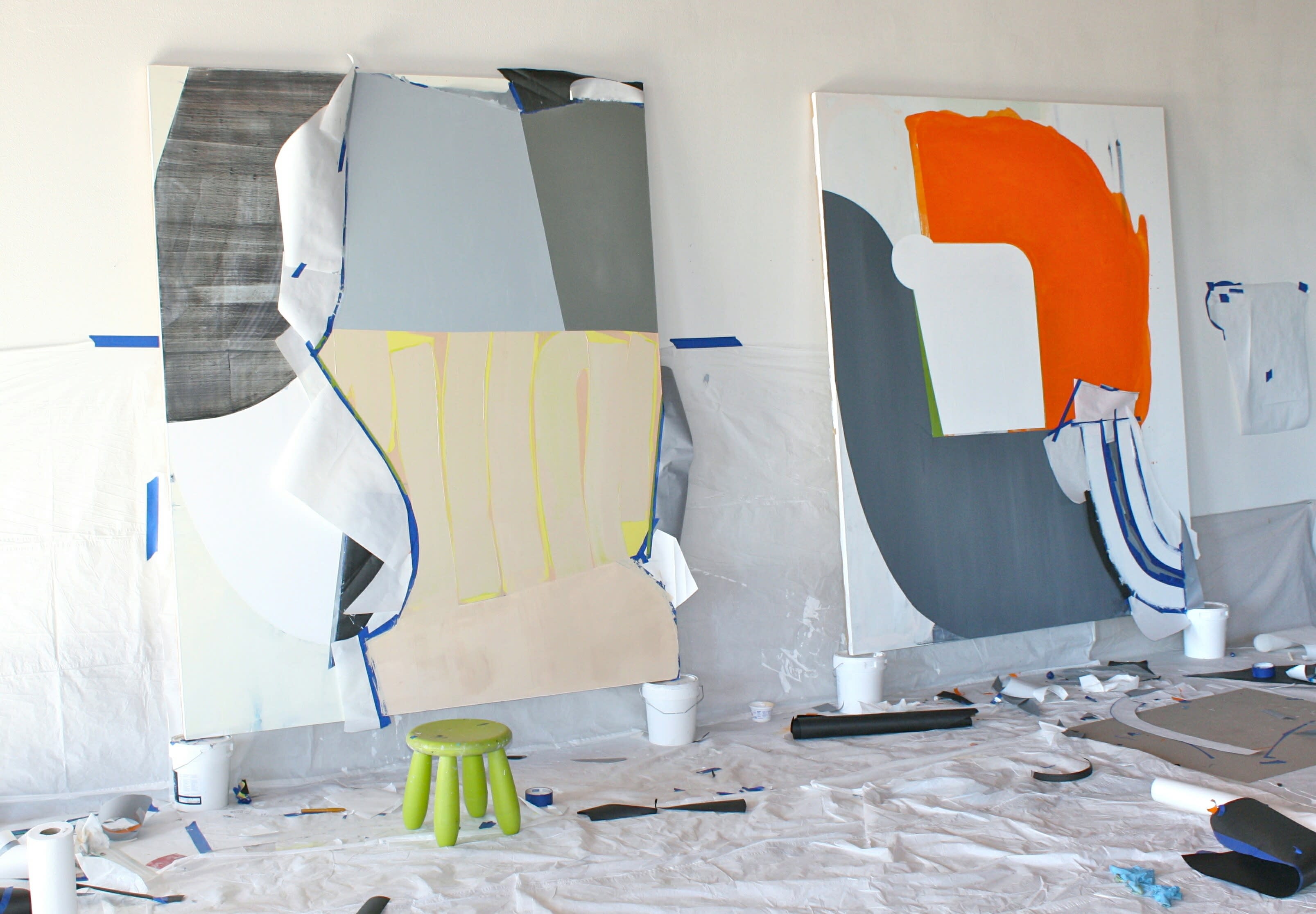
Works in progress, photo courtesy of the artist
What's your process like?
My process embraces trial and error and is loosely collage based. I usually begin a given painting with a drawn shape and one color. These initial moves morph into something else as I respond. I cut and paste paper shapes to figure out structural relationships. Painting for me is a kind of building process where a handful of simple forms enter into a relationship. Materially, there are areas of poured paint combined with areas of troweled paint. I rarely use a brush. Pouring is integral to my process, as I love its unpredictability.
How do you reconcile prioritizing flatness while also thinking of your forms as sculptural while you create and arrange them? How did you develop an interest in working with this kind of conflict, as well as the other conflicts and idiosyncrasies you explore in your work?
My work does revolve around conflation. I guess I'm operating on the idea that opposites attract. I personally respond to dynamic relationships and metaphorically incorporate that into what I do. My work is geometric and organic, flat and bodily, incidental and controlled, animated and formal, just to name a few. I don't work serially and I consider the paintings idiosyncratic in that each piece has a strong identity and oscillates between being refined and slightly awkward.
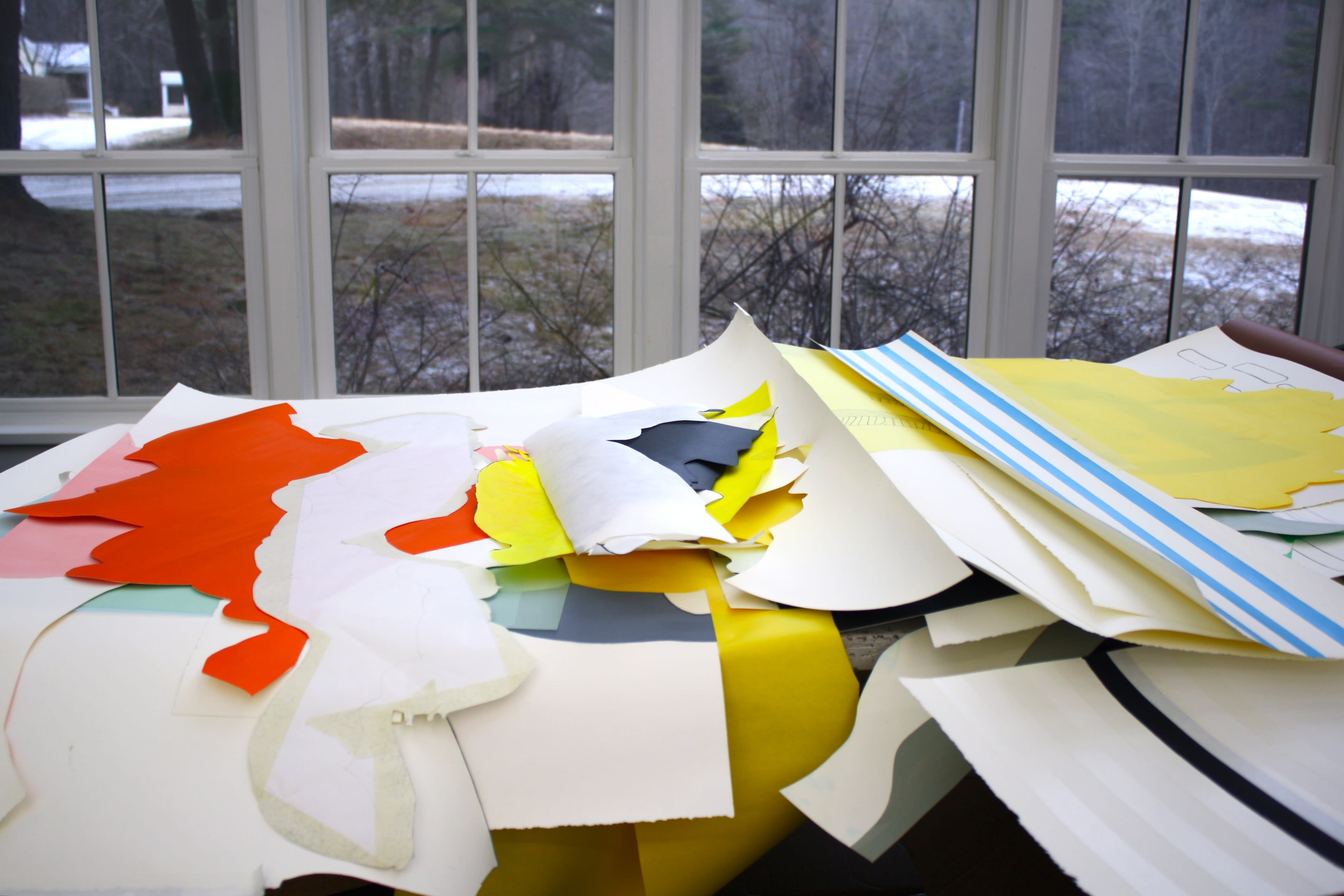
Work table, photo courtesy of the artist
Color seems to be another important element in your work. What's your relationship to color like, and how do you go about deciding on the palette for each piece?
Color is very intuitive for me. It's associative and evocative. In beginning a painting I usually hone in on one color -- say acid yellow for example - and the other colors will then develop in response to that. I also have a tendency to isolate color into large flat areas. This has to do with a need for clarity and specificity in the work.
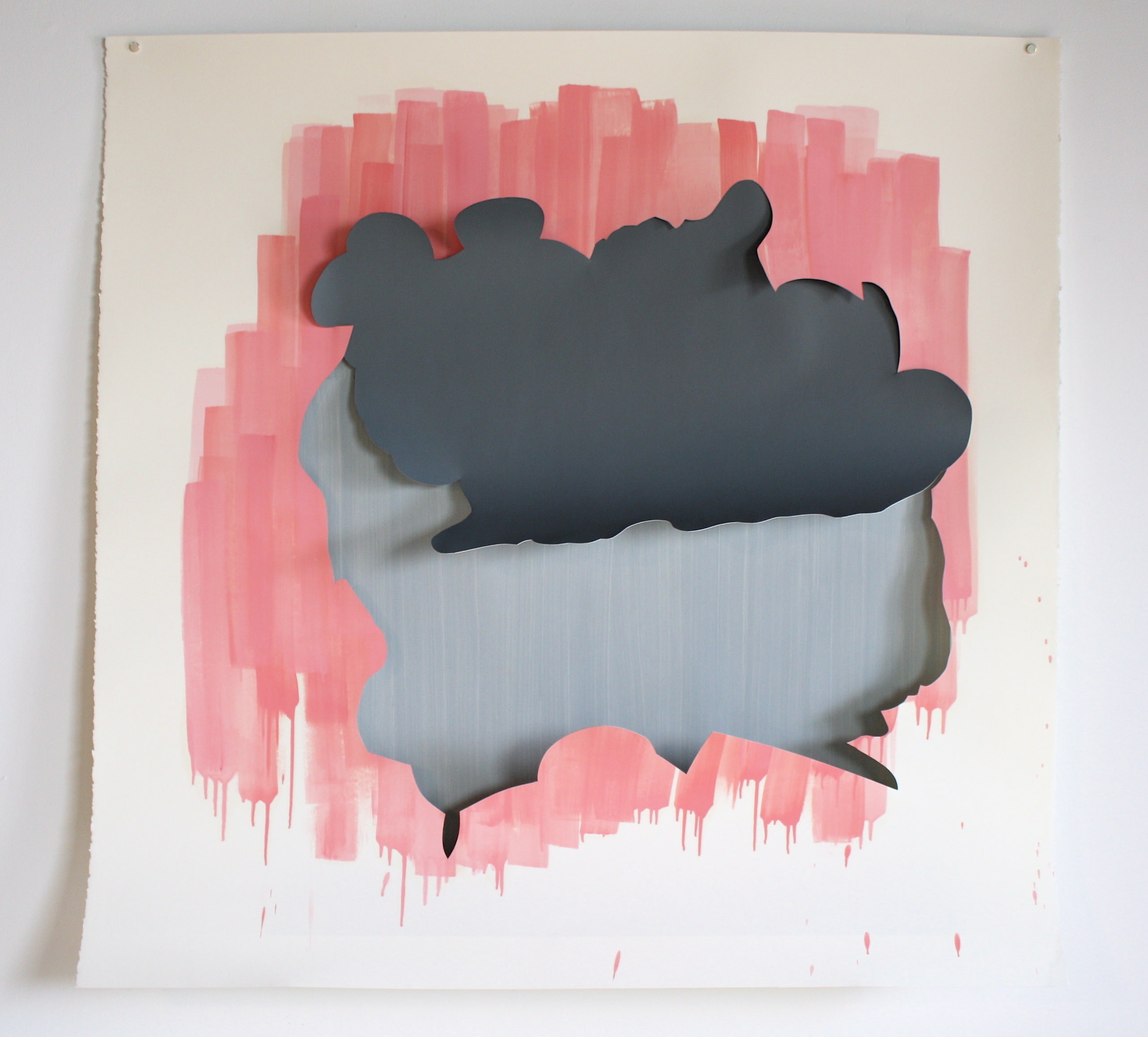
"Billows," photo courtesy of the artist
What led you to exploring the technique you use with your cut-paper works? What are the differences and similarities between how you approach and create these pieces versus your paintings?
There is a lot of cross-pollinating that goes on. I became interested in collage, but rather than the straightforward approach of cut and paste I decided to loosely layer cut paper shapes atop one another. This allowed for curling, soft shadows, and a bit of actual dimension in the paper works. I think it's sexy stuff to float heavy pigmented areas of oil paint onto clean raw paper. In everything I do I tend to reiterate the flatness of the picture plane while alluding to something bodily and/or structural. The decisions I make in both painting and in working with paper are based in observation from having paid attention to relationships, emotional resonance, color association, and how things get structured.

"Inside Out"
Explore more of Marcelyn McNeil's work here.